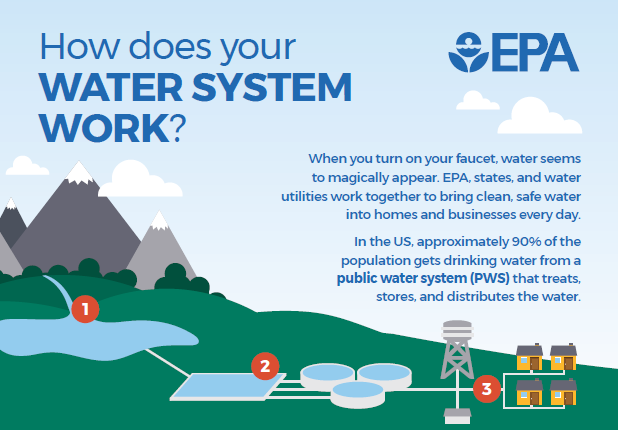Water Topics
When the water in our rivers, lakes, and oceans becomes polluted; it can endanger wildlife, make our drinking water unsafe, and threaten the waters where we swim and fish.
EPA research supports efforts under the Clean Water Act and Safe Drinking Water Act.
Basic Information about Your Drinking Water
Infographic: How does your water system work?

The United States enjoys one of the world’s most reliable and safest supplies of drinking water. Congress passed the Safe Drinking Water Act (SDWA) in 1974 to protect public health, including by regulating public water systems.
The Safe Drinking Water Act (SDWA) requires EPA to establish and enforce standards that public drinking water systems must follow. EPA delegates primary enforcement responsibility (also called primacy) for public water systems to states and Indian Tribes if they meet certain requirements.
Approximately 150,000 public water systems provide drinking water to most Americans. Customers that are served by a public water system can contact their local water supplier and ask for information on contaminants in their drinking water, and are encouraged to request a copy of their Consumer Confidence Report. This report lists the levels of contaminants that have been detected in the water, including those by EPA, and whether the system meets state and EPA drinking water standards.
Distilled Water for CPAP or BPAP machines.
Prolongs the life of your CPAP or Bi-Level machine.
We all say we care about the planet…
Single-use plastic bottles are destroying our planet. With Brita, you can enjoy great-tasting water without the waste.